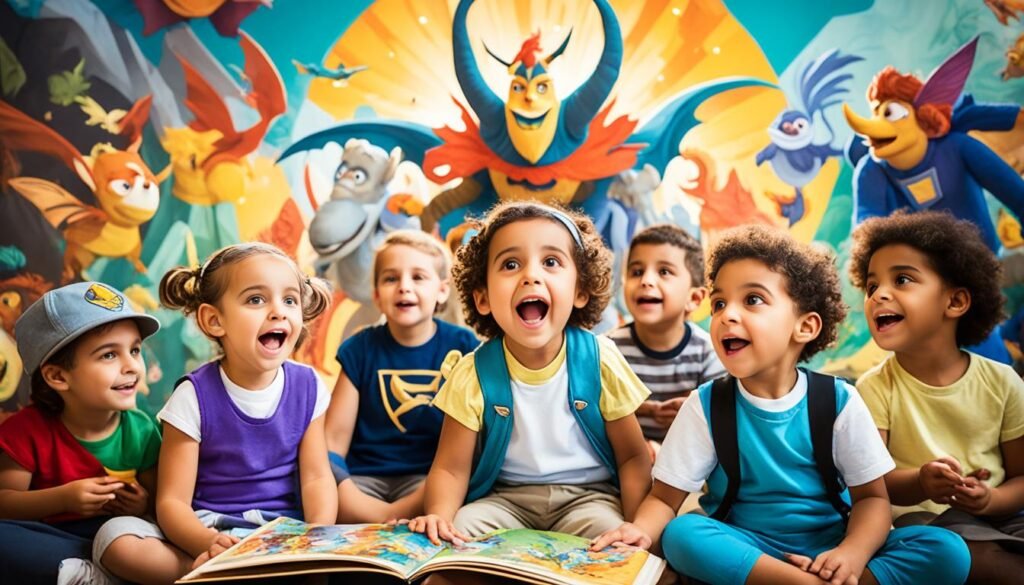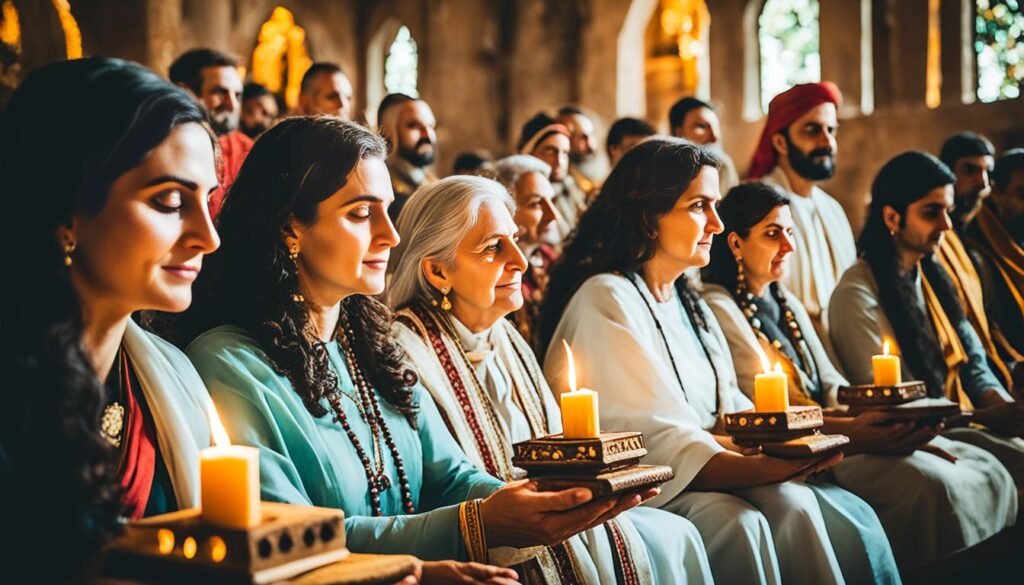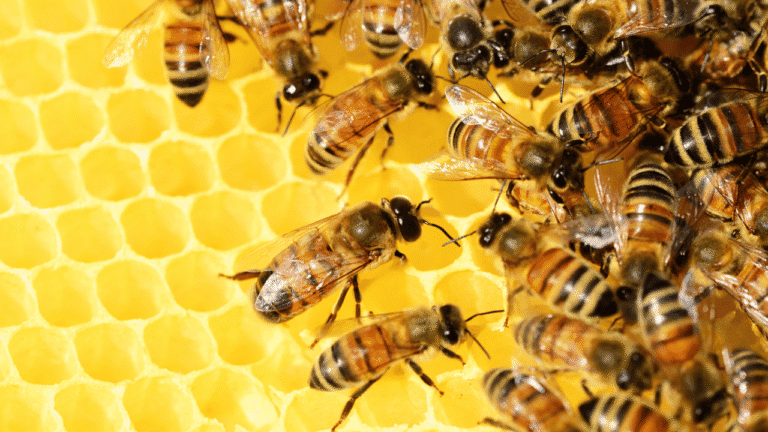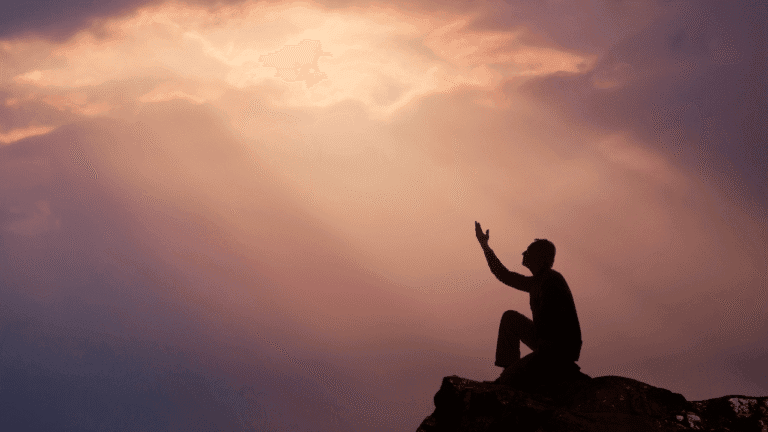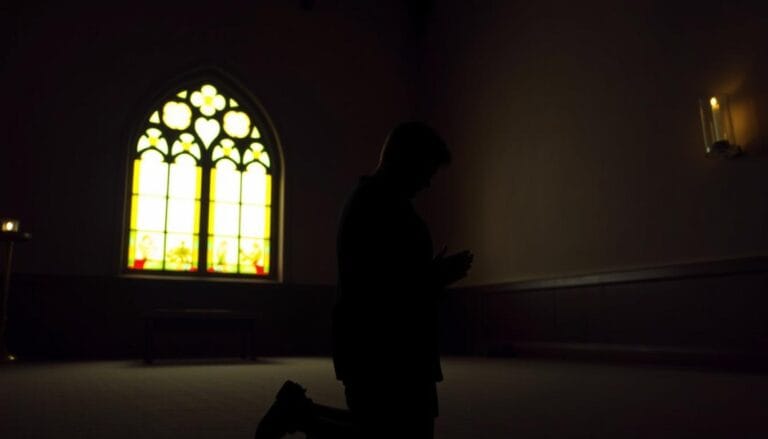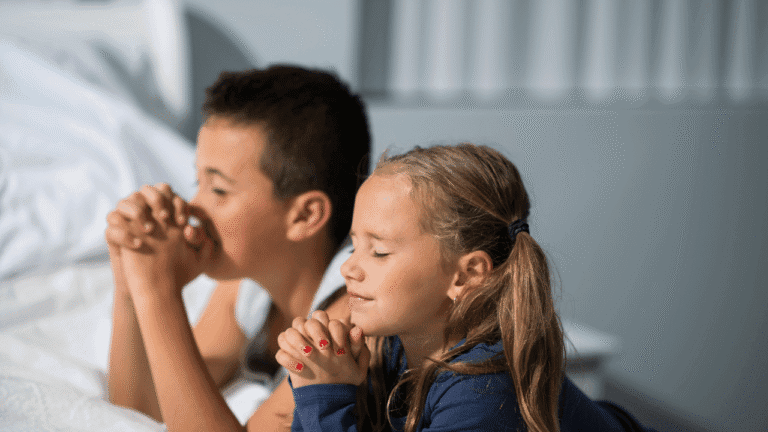Fowler Stages of Faith Spiritual Development Guide

Fowler Stages of Faith The journey of faith is a deep and changing experience. It shapes how we see the divine and our role in the world. James W. Fowler, an American theologian, created a model of faith development. This model shows how our spiritual growth changes over time.
His book, “Stages of Faith: The Psychology of Human Development and the Quest for Meaning,” outlines seven stages of faith. Each stage has its own traits and challenges.
Fowler’s stages of faith give us a way to understand how our spiritual path changes from being a baby to being an adult. They show how our search for meaning and purpose changes too. If you’re looking for spiritual growth, a religious leader, or just curious about faith, these stages can help you.
They can make your spiritual journey clearer and give you more purpose.
Key Takeaways
- Fowler stages of faith describe the evolution of spiritual development from infancy to adulthood.
- Each stage is characterized by unique perspectives, challenges, and opportunities for growth.
- Transitions between stages can be challenging but lead to a deeper understanding of faith.
- Fowler’s model emphasizes the importance of critical reflection and personal ownership of beliefs.
- Understanding the stages of faith can help individuals and communities foster spiritual growth and resilience.
Introduction to Fowler’s Faith Development Theory
James W. Fowler’s work changed how we see spiritual growth and the cognitive development of faith. His theory says faith guides our values, ideas, and actions. It suggests faith is not just about religion but a force that shapes us.
This theory talks about seven stages of faith formation. Each stage builds on the last and matches certain human development phases.
People move through these stages as they grow, facing challenges that shape their faith. These stages match human development theories like Spiral Dynamics and Integral Theory. They show faith development is common across cultures and beliefs.
Fowler’s seven stages of faith are:
- Primal or Undifferentiated Faith (Infancy)
- Intuitive-Projective Faith (Early Childhood)
- Mythic-Literal Faith (School-Going Years)
- Synthetic-Conventional Faith (Adolescence)
- Individuative-Reflective Faith (Young Adulthood)
- Conjunctive Faith (Mid-Life)
- Universalizing Faith (Later Adulthood)
Each stage shows a different way to understand and feel faith. From basic trust in infancy to deep, selfless faith in later life. Moving through these stages, people grow in self-awareness and connect deeply with the divine.
Faith is key to personal growth, resilience, and finding meaning. Knowing these stages helps us understand our spiritual path. It helps us build a real, meaningful relationship with the sacred.
Fowler’s theory has led to many studies and practical uses. It’s used in pastoral counseling, spiritual care, and more. Reflecting on our faith journey shows the power of spiritual growth.
Stage 0: Primal or Undifferentiated Faith
The journey of faith starts at the beginning of life, in Stage 0, or Primal or Undifferentiated Faith. This stage covers the first two years, a time of total dependence on caregivers. It’s when the foundation of trust in the world is built. This period sets the stage for an individual’s future spiritual journey.
Characteristics of Infants in Stage 0
Infants in Stage 0 can’t think or understand things like time or object permanence yet. Their world is filled with immediate feelings and experiences. The care they get from caregivers shapes their view of the world.
James W. Fowler, in his book Stages of Faith, says infants form “pre-images” of God through feelings before they learn language. These early feelings set the stage for their faith later on, affecting how they see the universe and the divine.
The Role of Caregivers in Shaping Faith
Caregivers are key in building trust in infants during Stage 0. Their consistent, loving care helps infants see life positively and feel secure. This early faith is the base for future faith growth.
Fowler says the care infants get is crucial for their future spirituality. Good experiences build trust and openness. Bad experiences can lead to distrust and a cautious faith.
| Age Range | Key Characteristics | Caregiver’s Role |
|---|---|---|
| Birth to 2 years | Lack of self-other distinction, linear time perception, and object permanence | Providing consistent, loving care to nurture trust |
| Pre-language and pre-conceptual thought | Formation of “pre-images” of God through sensations and feelings | Helping infants develop a positive outlook on life and security |
As infants move from Stage 0 to Stage 1, they start to think and use language. This marks the start of a new phase in their faith journey. Imagination and magical thinking become more important.
Stage 1: Intuitive-Projective Faith
Children start their faith journey in Stage 1, called Intuitive-Projective Faith, from age 3 to 7 or 8. This stage is full of growth and discovery in their spiritual life.
The Emergence of Language and Symbols
At this stage, language and symbols start to appear. Kids start to use symbols and language as they grow and interact with others. This lets them name things and understand that objects still exist even when they can’t see them.
Kids’ language skills get better, letting them share their thoughts and feelings. They use words to talk about the world and their faith, even if their understanding is simple. This is a big step in their faith journey.
Magical Thinking and Imagination
Magical thinking and imagination are big parts of this stage. Kids have a rich inner world full of thoughts and ideas. They mix these with what they learn from others, making their understanding of faith full of wonder.
Kids at this age think that some people or things have special powers. They might think their thoughts or actions can change the world. Adults might see this as just make-believe, but it helps kids understand their faith and feel in control.
| Age Range | Key Characteristics |
|---|---|
| 3-7 or 8 years old |
|
“The child can use language to describe the divine but cannot capture it. God may be imaged as a superhero or a gentle friend, but these images are episodic in flavor.”
– Dr. James Fowler
As kids go through this stage, they’re setting the stage for a life of spiritual growth. They use their language skills and magical thinking to explore a world full of possibilities. This prepares them for deeper faith explorations later on.
Stage 2: Mythic-Literal Faith
Children move into a stage called mythic-literal faith as they grow spiritually. This stage is from ages 6 to 12. It’s when they start to really understand religious stories and symbols. They also learn about moral principles.
The Importance of Stories and Narratives
At this stage, kids love the stories from their religion. These stories have heroes, villains, and important lessons. They believe these stories are true and learn a lot from them.
Teachers and parents are key in sharing these stories with kids. They use stories, talks, and fun activities. This helps kids feel connected to their faith and community. It’s the start of their spiritual journey.
Moral Reciprocity and Righteousness
Kids start to see right and wrong clearly at this stage. They know good actions get rewards and bad ones have consequences. This simple view of morality helps them make choices.
They also want to be righteous, following their faith’s moral rules. They focus on doing things right and showing their faith through actions. This can lead to good behavior and a strong moral compass for life.
| Age Range | Key Characteristics | Faith and Psychology |
|---|---|---|
| 6-12 years old | Literal interpretation of stories Concrete thinking Moral reciprocity | Internalizing religious teachings Developing a sense of righteousness Influenced by parents and faith community |
During this stage, kids set the stage for their future spiritual growth. They start to build a worldview with the stories and teachings of their faith. With support from caregivers and their faith community, they can grow with a strong belief system and a desire to keep exploring their spirituality.
Stage 3: Synthetic-Conventional Faith
Many people enter the Synthetic-Conventional Faith stage around 12 or 13 years old. They often stay in this stage into adulthood. This stage is all about fitting in and following what others expect. People try to find their place in a religious group.
At this stage, people care a lot about what others think. They want to match their beliefs with what their friends and leaders believe. They look to others for approval to make sure their beliefs are right.
“Many religious individuals remain at the Synthetic-Conventional stage throughout adulthood, contributing to the predominance of this stage in church and synagogue life.”
Even though they think they make their own choices, their beliefs are often shaped by others. Their values are not deeply thought out and are not yet questioned. The symbols and rituals in their faith are closely linked to their beliefs and what they represent.
This stage has a big flaw: it relies too much on others for validation. If the trust in leaders or traditions drops, it can push people to move on. This can lead them to the next stage, Individuative-Reflective Faith.
| Characteristic | Description |
|---|---|
| Conformity | Strong emphasis on conforming to external authorities and expectations |
| Religious Identity | Seeking to establish identity within a religious community |
| External Authority | Locating authority in significant others or leadership figures |
| Unexamined Values | Value systems are often tacit and largely unexamined |
| Symbolic Meaning | Symbols and rituals are deeply tied to meaning systems |
As people face the challenges of this stage, they may start to doubt their beliefs. This can lead them to look for a faith that is more personal and thoughtful. This can move them into the next stage of spiritual growth.
Stage 4: Individuative-Reflective Faith
In young adulthood, many people hit a key point in their spiritual path called Stage 4: Individuative-Reflective Faith. This stage marks a big change in how they see things. They start to question their beliefs, moving from a faith given to them to a more personal identity and grasp of their spirituality.
Switching to Stage 4 can be tough and life-changing. It often brings feelings of loss, dislocation, grief, and guilt. Not everyone makes it to this stage, and some may only get there in their mid-thirties or forties. This time of questioning beliefs and finding oneself can take five to seven years or more. It can shake up someone’s life a lot.
Questioning and Examining Beliefs
At the heart of Stage 4 is a process called demythologizing. People start to see symbols and rituals in a new way. This change can bring both good and bad, as they take charge of their own choices and beliefs. They become more aware of their own views and how others’ views were shaped.
“The movement from Stage 3 to Stage 4 Individuative-Reflective faith is particularly critical for it is in this transition that the late adolescent or adult must begin to take seriously the burden of responsibility for his or her own commitments, beliefs, and attitudes.”
– James W. Fowler
Developing a Personal Identity and Faith
Going through Stage 4, people start to find their own inner authority. This journey of finding a personal identity and faith can feel lonely and deep. But it’s key to living a more real and meaningful spiritual life. Some might move towards Stage 4 but not fully, staying in between Stage 3 and 4.
| Characteristics of Stage 4: Individuative-Reflective Faith |
|---|
| Questioning and examining long-held beliefs |
| Developing a personal identity and understanding of faith |
| Locating authority internally rather than externally |
| Increased awareness of one’s own ideology and external influences |
| Demythologizing symbols and rituals |
For some, getting married can help them create a new way of living and delay the tough parts of changing. But facing the challenges of Stage 4 is key to growing spiritually. By going through Stage 4, people can gain a deeper, more personal grasp of their beliefs and a stronger spiritual identity.
Stage 5: Conjunctive Faith
As people grow spiritually, they might find themselves facing the complexities of faith. This is what Stage 5, or Conjunctive Faith, is all about. It usually happens in midlife. At this point, people start to see the value in different faiths.
Conjunctive Faith is about holding onto different beliefs at the same time. People at this stage know that truth is more than one belief. They’re okay with the idea of spiritual paradox. They understand that God can be experienced in ways we can’t explain.
Embracing Paradox and Mystery
At Stage 5, people see faith in a new way. They realize they don’t have all the answers. This openness lets them dive deeper into their faith, beyond just the words of sacred texts.
“The sacrament of defeat is a key experience in Stage 5, as individuals come to terms with the reality of irrevocable commitments and actions.”
People at this stage see everyone as connected. They believe all faiths are part of a bigger spiritual picture. They’re more likely to talk with people from different beliefs and learn from them.
Openness to Other Faiths and Perspectives
Stage 5 is about being open to other faiths. It doesn’t mean giving up one’s own beliefs. It’s about seeing how others experience the divine and enriching their own faith.
This openness comes from humility and understanding our limits. People at this stage might use guided prayer and quiet time to connect with the divine.
| Age Range | Percentage in Stage 5 | Percentage in Stages 4-5 |
|---|---|---|
| 31-40 | 14.6% | 3.3% |
Research shows more people are reaching Stage 5 earlier in life. This is because they’re exposed to different faiths and think deeply about their beliefs. They might find the mysteries of faith at a younger age.
Stage 5 is a big step in a person’s spiritual journey. By accepting faith’s complexity, people can connect with the divine in a deeper way.
Stage 6: Universalizing Faith
The sixth and final stage of Fowler’s faith development theory is called universalizing faith. It’s a rare achievement that only a few reach. This stage means feeling deeply spiritual and looking beyond specific religions to see faith and compassion as universal.
People at this stage feel deeply connected to all humans and the divine. They see everyone’s worth and dignity, no matter their beliefs. They are fully committed to compassion, justice, and helping others.
“The universalizing stage is one in which persons begin radically to live as though what Christians and Jews call the ‘kingdom of God’ were already a fact.” – James W. Fowler
These individuals often lead positive changes in the world. They work hard for peace, equality, and understanding among everyone. They are driven by a strong sense of purpose and want to ease suffering wherever they can.
| Stage | Age Range | Percentage of Population | Characteristics |
|---|---|---|---|
| Stage 6: Universalizing Faith | 45 and older | 1-2% | Enlightenment, compassion, embracing all faith perspectives, deep sense of belonging to a universal community |
Some notable examples of individuals who have reached the universalizing faith stage include:
- Mahatma Gandhi
- Mother Teresa
- Martin Luther King Jr.
- Thich Nhat Hanh
- Desmond Tutu
Reaching universalizing faith is a high goal, but it motivates us all on our spiritual paths. By being compassionate, learning from different faiths, and aiming for a just world, we can live by universalizing faith’s principles.
Applying Fowler’s Stages of Faith in Spiritual Growth
Fowler’s theory helps us understand and grow spiritually. It shows how to move forward on a faith journey. This journey leads to spiritual growth and fulfillment.
Recognizing One’s Current Stage of Faith
Looking inward is key to spiritual growth. By using Fowler’s stages, we can see where we are in our faith. This helps us know what to focus on to grow.
To find your stage, think about these things:
- The role of authority figures in shaping beliefs
- The level of critical thinking and questioning applied to faith
- The openness to diverse perspectives and paradox
- The integration of faith into daily life and decision-making
Fostering Spiritual Development Through the Stages
Practices help us grow spiritually. The journey is personal, but some activities help everyone:
| Stage | Practices for Spiritual Growth |
|---|---|
| Intuitive-Projective Faith | Storytelling, imaginative play, nurturing environments |
| Mythic-Literal Faith | Moral education, community involvement, exploring faith stories |
| Synthetic-Conventional Faith | Mentorship, group discussions, service opportunities |
| Individuative-Reflective Faith | Personal study, questioning, seeking diverse perspectives |
| Conjunctive Faith | Interfaith dialogue, embracing mystery, social justice work |
| Universalizing Faith | Contemplative practices, selfless service, promoting unity |
Remember, growing spiritually is a lifelong journey. It’s not always a straight line. Each stage has its own challenges and chances to grow. We might go back to earlier stages as we learn new things.
The goal is not to achieve perfection but to engage in the ongoing journey of spiritual development with openness, humility, and a commitment to personal and collective transformation.
Using Fowler’s stages, we can build a deeper, more real spiritual life. This life values the complexity and richness of being human.
Criticisms and Limitations of Fowler’s Stages of Faith
James Fowler’s Stages of Faith theory has greatly influenced faith development studies. Yet, it has its downsides. Critics say the stages seem too simple and don’t show the full range of religious experiences. They worry about a bias towards Western Christianity.
Fowler’s work might lean too much towards Christianity, based on US interviews. This makes it hard to apply to other cultures and faiths. It could overlook how faith grows differently around the world.
“Fowler’s theory tends to privilege spirituality over religion, which may lead to downplaying the importance of religious dogma or doctrine.” – Religious studies scholar
The theory also doesn’t look at how gender, race, and other social factors affect faith. These things can greatly change how people experience religion. Leaving them out might make the theory less useful in diverse settings.
| Criticism | Explanation |
|---|---|
| Linear stages | The stages may not fully capture the complexity and diversity of faith experiences |
| Western, Christian bias | The theory was developed based on interviews with primarily Christian individuals in the US |
| Lack of social factors | The theory does not adequately address the role of gender, race, and other social factors |
Even with its flaws, Fowler’s theory is still useful for understanding faith development. It has started important discussions on religious growth. By facing these criticisms, experts can make the theory better. This will help it better capture the variety of human faith.
Conclusion
James Fowler Stages of Faith theory helps us understand spiritual growth and faith development. It shows how faith changes throughout life, from early childhood to later years. This framework helps us see our own spiritual paths and connect with others.
This theory is useful but not without its limits. It helps us see how faith shapes our lives and relationships. By looking at these faith stages, we learn about our own spiritual growth and others’ journeys.
Spiritual growth is a lifelong journey filled with questions and changes. By being open and curious, we can deepen our faith and find new meaning. As we move through each stage, let’s find the courage to keep growing in faith, together with others.



